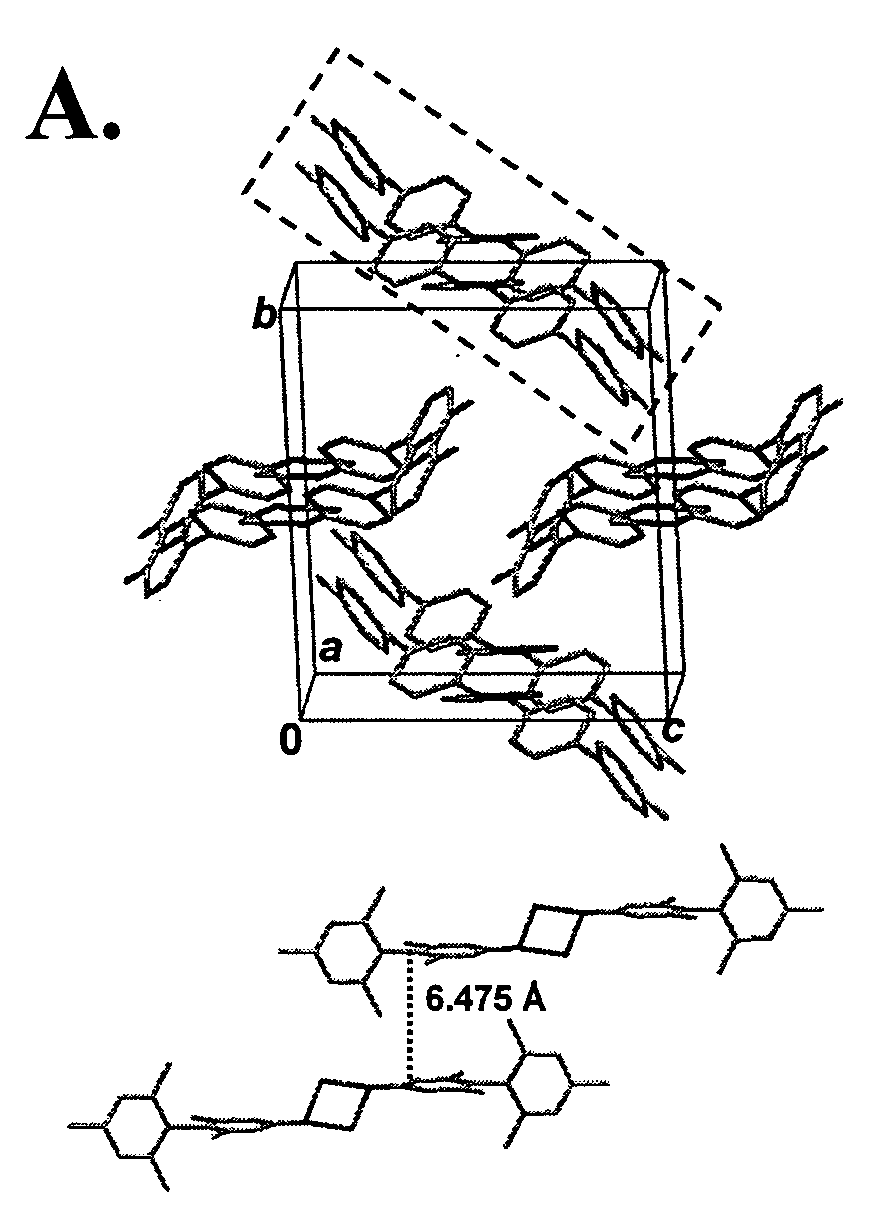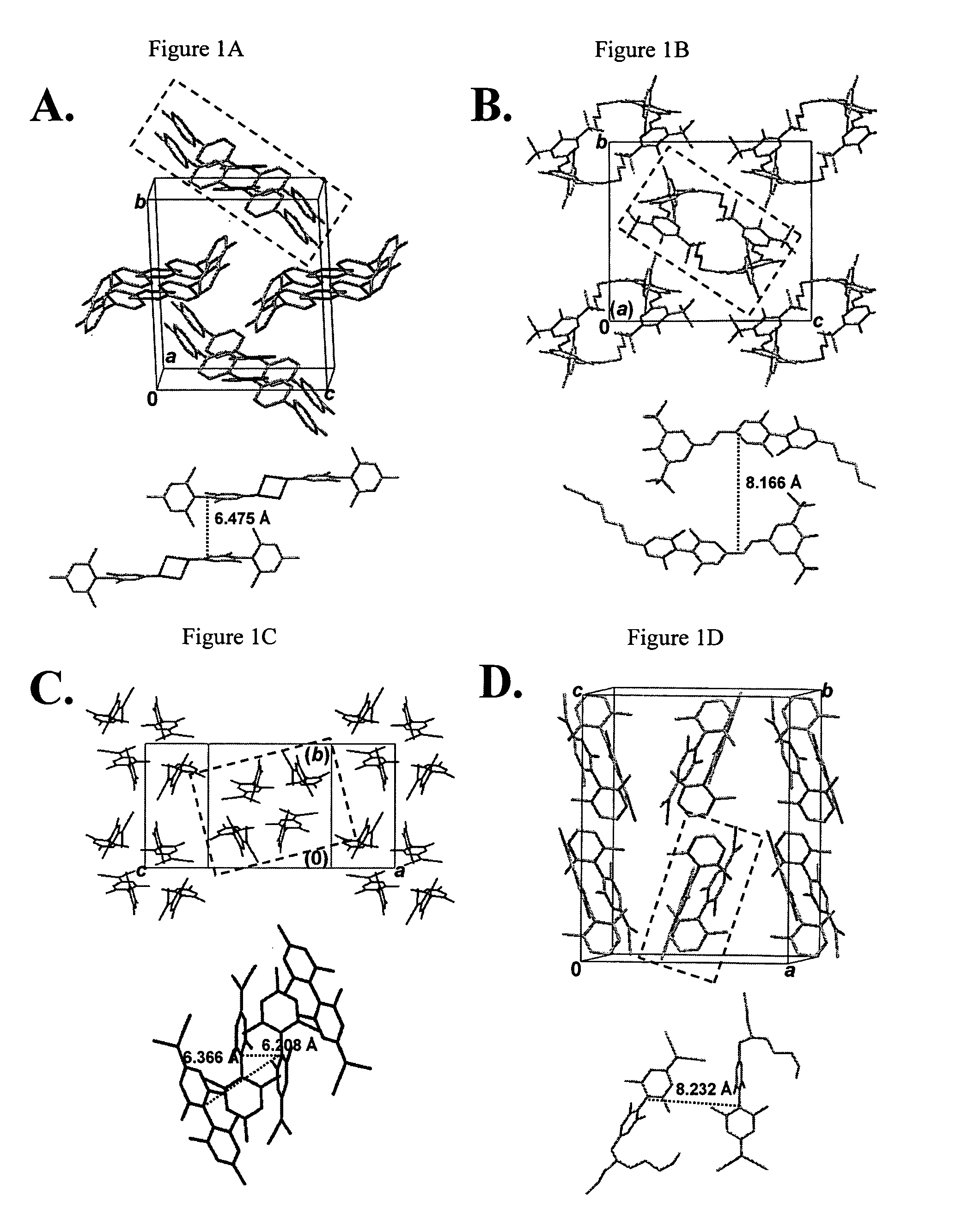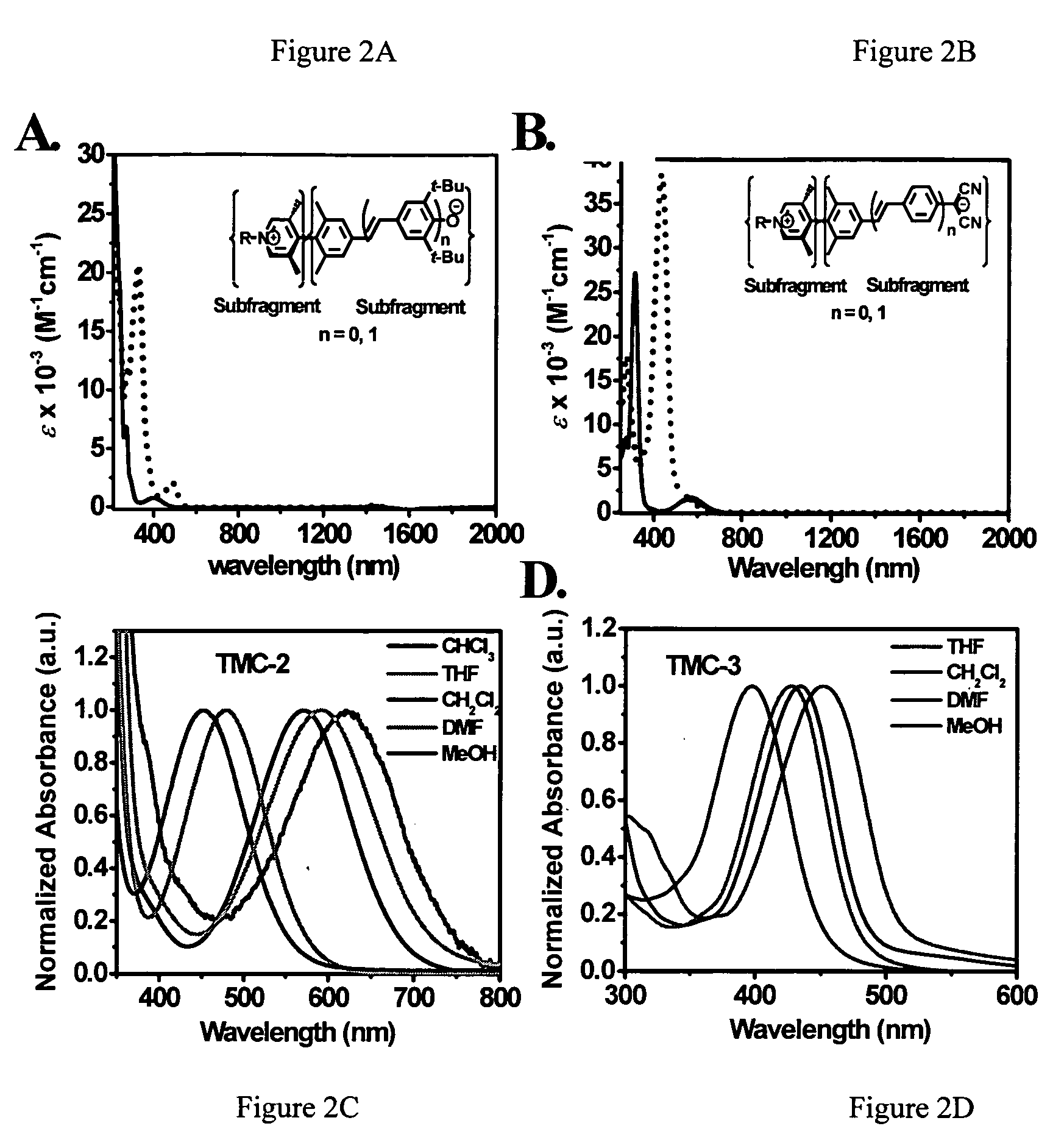Twisted pi-electron system chromophore compounds with very large molecular hyperpolarizabilities and related compositions and devices
a chromophore compound and twisted pi-electron technology, applied in the field of high-performance molecule-based electrooptic materials, can solve the problems of eroding the transparency at the near-ir working wavelength for many photonic applications, inherently complex structure of molecules, and introducing potential chemical, thermal, photochemical frailties, etc., and achieves the effect of large hyperpolarizabilities
- Summary
- Abstract
- Description
- Claims
- Application Information
AI Technical Summary
Benefits of technology
Problems solved by technology
Method used
Image
Examples
example 1
[0087] Synthesis of 2-bromo-5-methoxy-1,3-dimethyl-benzene. To a mixture of 4-bromo-3,5-dimethyl-phenol (40.2 g, 0.200 mol) and potassium carbonate (55.2 g, 0.400 mol) in acetone (200 mL) was added methyl iodide ( 24.9 mL, 0.600 mol) at room temperature under N2. The reaction mixture was then refluxed at 65° C. for 8 h. After cooling to room temperature, the mixture was filtered, and the filtrate was concentrated in vacuo. The resulting clear liquid was distilled under reduced pressure (70° C. / 0.1 Torr) to give 42.4 g (99%) of title compound as a colorless liquid. 1H NMR (400 MHz, CDCl3): δ 6.663 (s, 2H), 3.778 (s, 3H), 2.402 (s, 6H); 13C NMR (100 MHz, CDCl3): δ 158.165, 139.203, 118.357, 113.953, 55.520, 24.319. MS (EI): m / z 214 [M+, 79Br 100], 216 [M+, 79Br, 96].
example 2
[0088] Synthesis of 4-methoxy-2,6-dimethylphenylboronic acid (2). An oven-dried three-neck round-bottom flask equipped with two rubber septum-sealed addition funnels and a sidearm stopcock was evacuated and backfilled with N2. Dry THF (100 mL) and 2-bromo-5-methoxy-1,3-dimethyl-benzene (21.5 g, 0.100 mol) were then added via syringe. The mixture was then cooled to −78° C. with stirring in a dry ice-acetone bath. Next, n-butyl lithium (2.5 M solution in hexane, 44 mL, 0.11 mol) was added dropwise via syringe with stirring over the course of 45 min at −78° C., and the mixture was allowed to stir at −78° C. for an additional 30 min. Triisopropyl borate (28.2 g, 0.150 mol) was then added dropwise via syringe over the course of 30 min at −78° C. After stirring at −78° C. for an additional 1 h, the mixture was quenched with saturated aqueous NH4Cl solution (100 mL), and the resulting mixture allowed to gradually warm to room temperature. The organic layer was next separated, and the aqueo...
example 3
[0089] Synthesis of 4-(4-methoxy-2,6-dimethyl-phenyl)-3,5-dimethyl-pyridin-1-ol (3). A flame-dried sealable Schlenk tube was charged with 4-bromo-3,5-dimethyl-pyridine 1-oxide (1; 10.1 g, 50.0 mmol), 2 (18.0 g, 100 mmol), Pd2(dba)3 (0.915 g, 1.00 mmol), dicyclohexyl-(2-phenanthren-9-yl-phenyl)-phosphane (1.8 g, 4.0 mmol), and K3PO4 (31.9 g, 150 mmol). The Schlenk tube was next evacuated and backfilled with N2. Then, degassed dry toluene (100 mL) was added via syringe under N2. The Schlenk tube was sealed, and the mixture was stirred at 120° C. for 48 h. The reaction mixture was subsequently cooled to room temperature, diluted with methylene chloride (500 mL), filtered, and concentrated in vacuo. The resulting dark brown oil was allowed to stand at room temperature until the colorless crystalline product separated from the liquid. The solid was then collected by filtration and identified as the pure title compound (6.55 g). The filtrate was purified by flash chromatography eluting wi...
PUM
 Login to View More
Login to View More Abstract
Description
Claims
Application Information
 Login to View More
Login to View More - R&D
- Intellectual Property
- Life Sciences
- Materials
- Tech Scout
- Unparalleled Data Quality
- Higher Quality Content
- 60% Fewer Hallucinations
Browse by: Latest US Patents, China's latest patents, Technical Efficacy Thesaurus, Application Domain, Technology Topic, Popular Technical Reports.
© 2025 PatSnap. All rights reserved.Legal|Privacy policy|Modern Slavery Act Transparency Statement|Sitemap|About US| Contact US: help@patsnap.com



